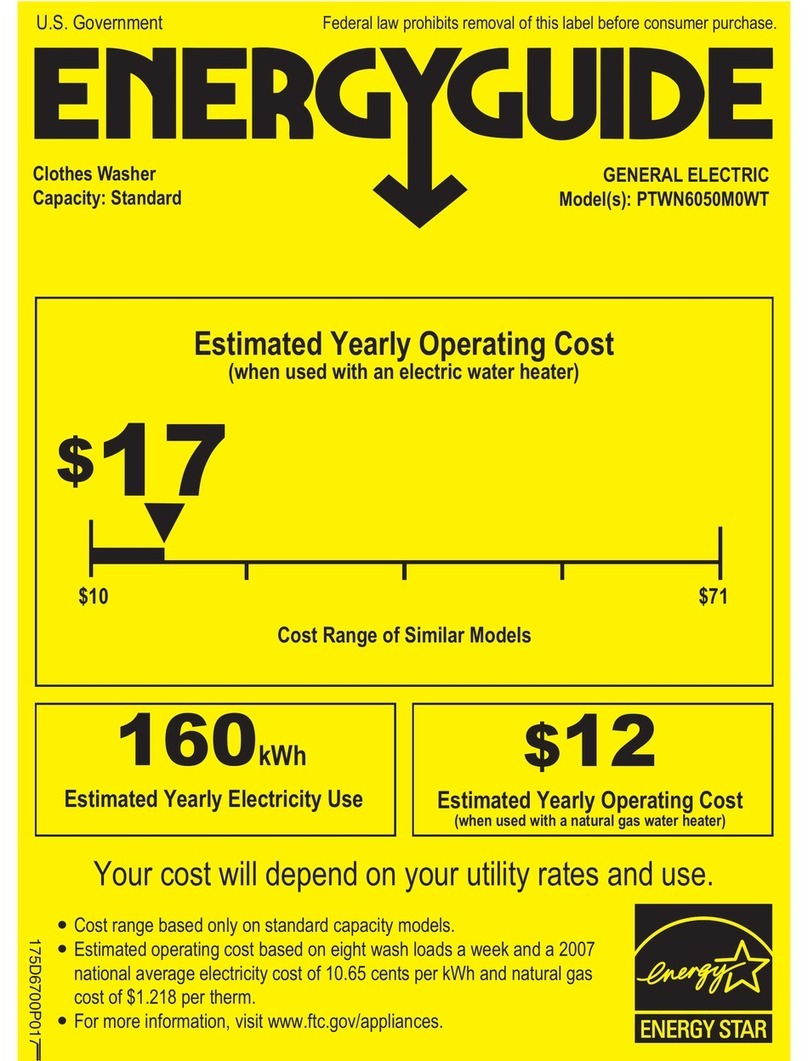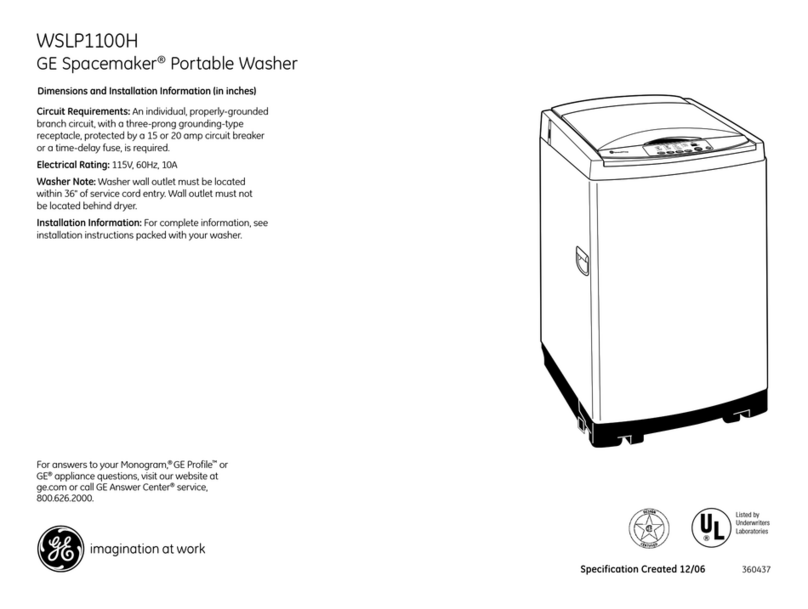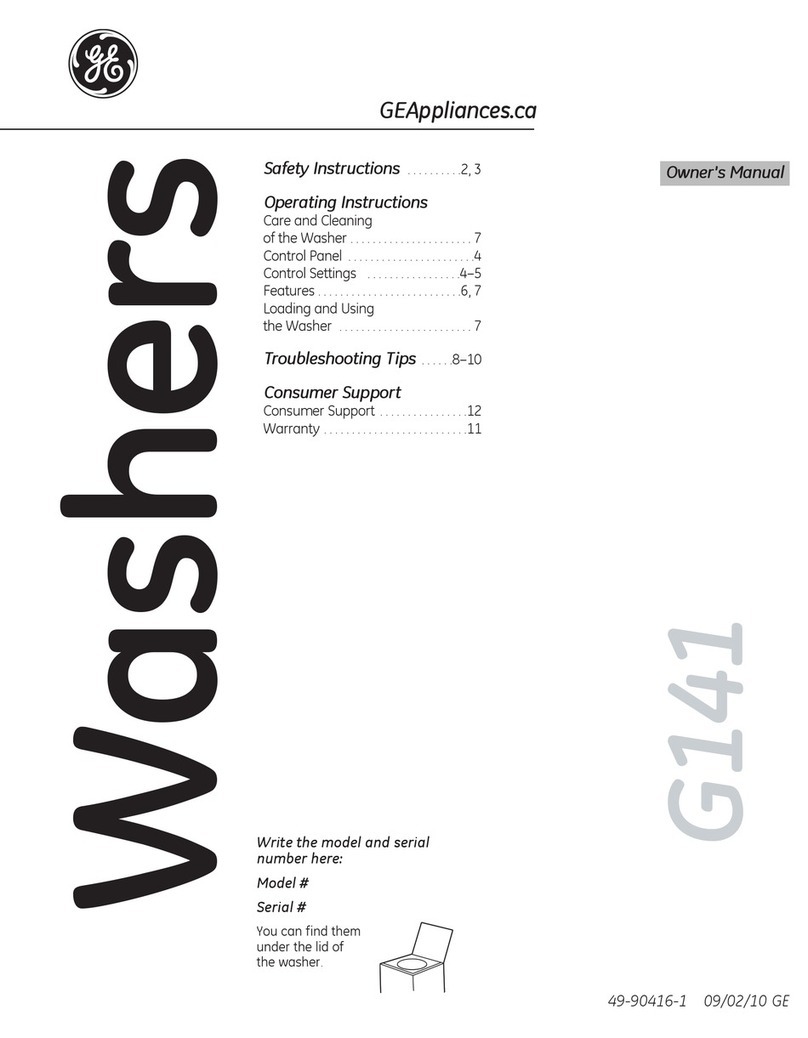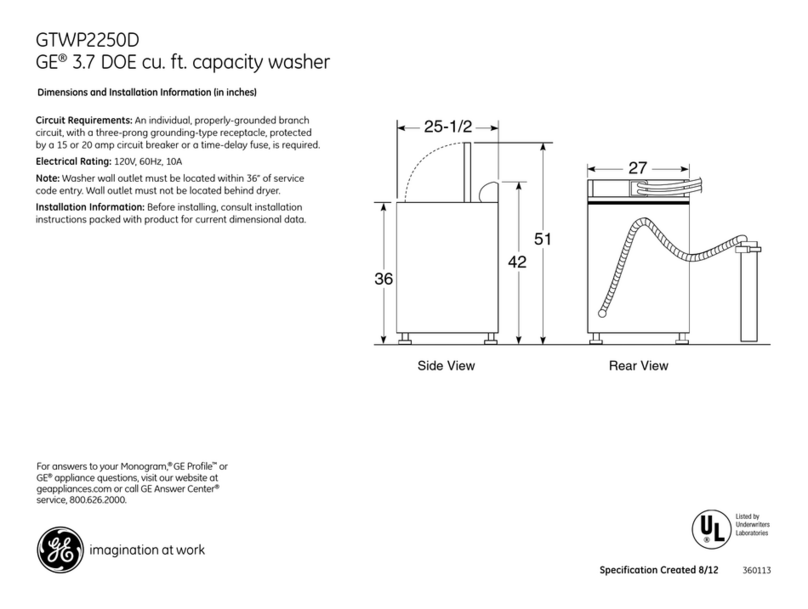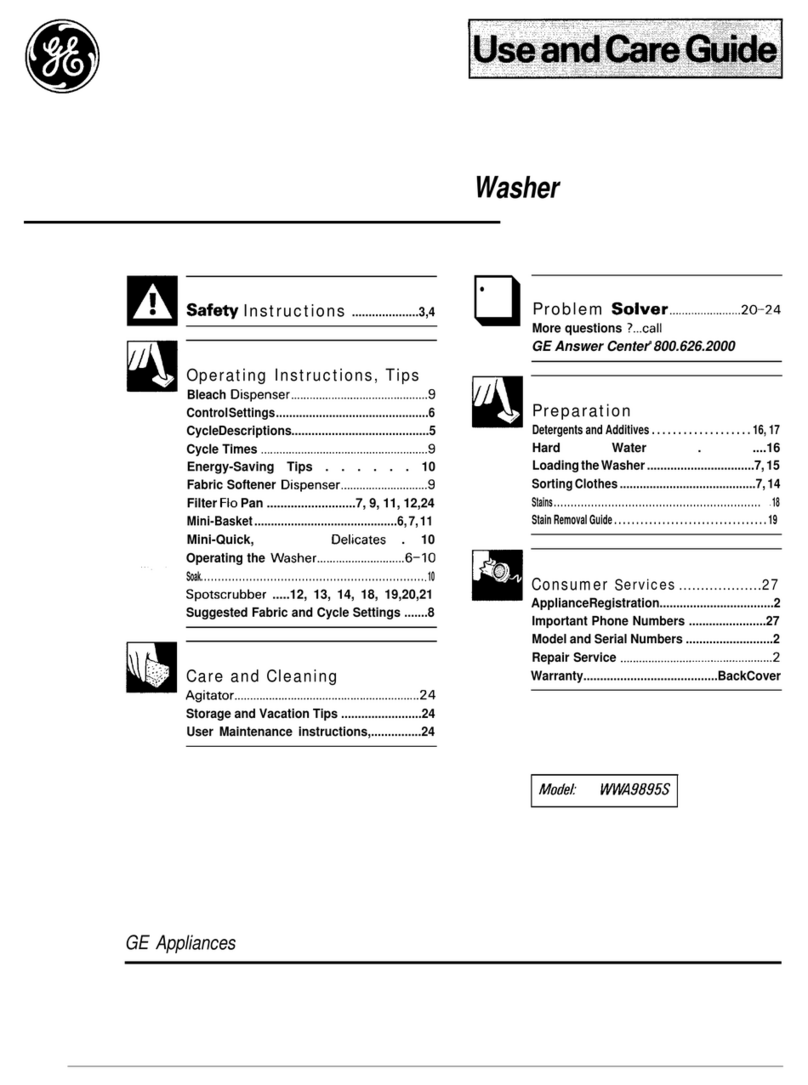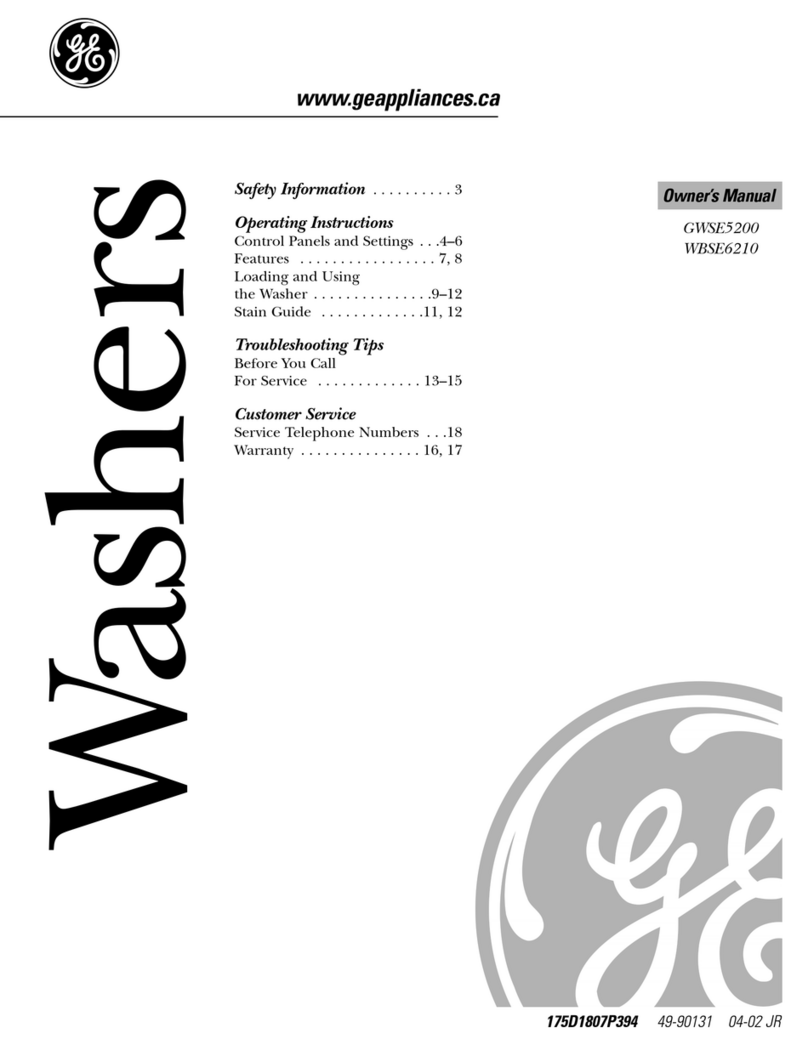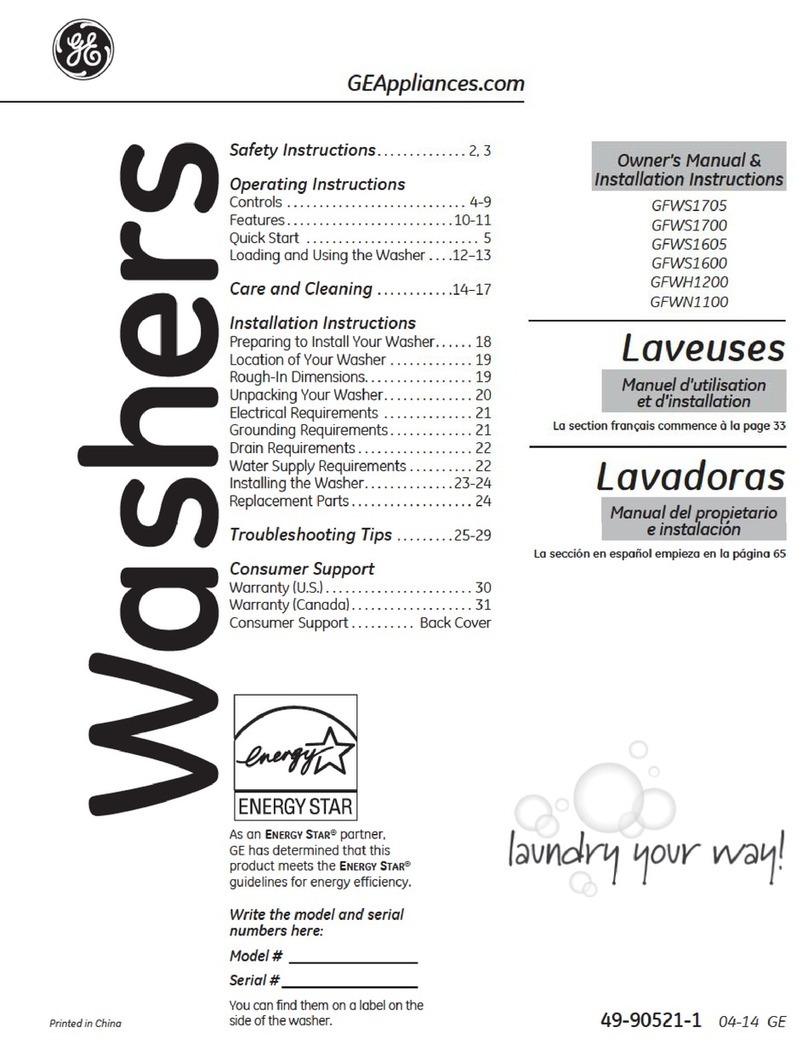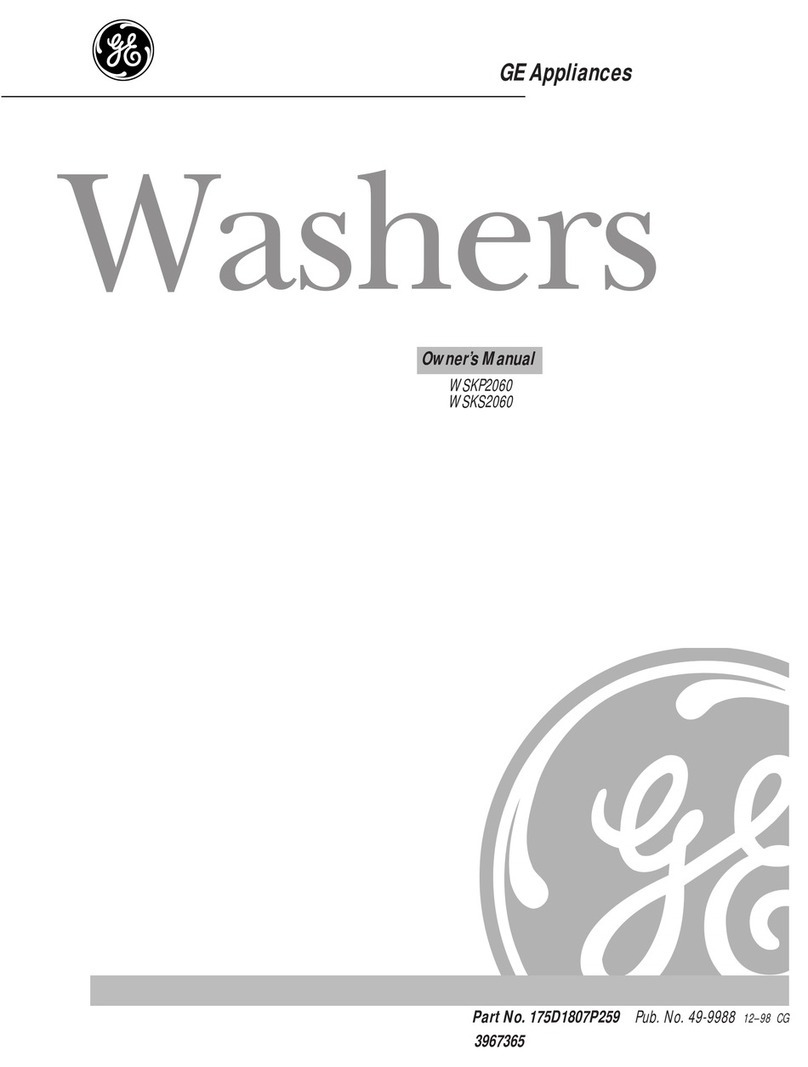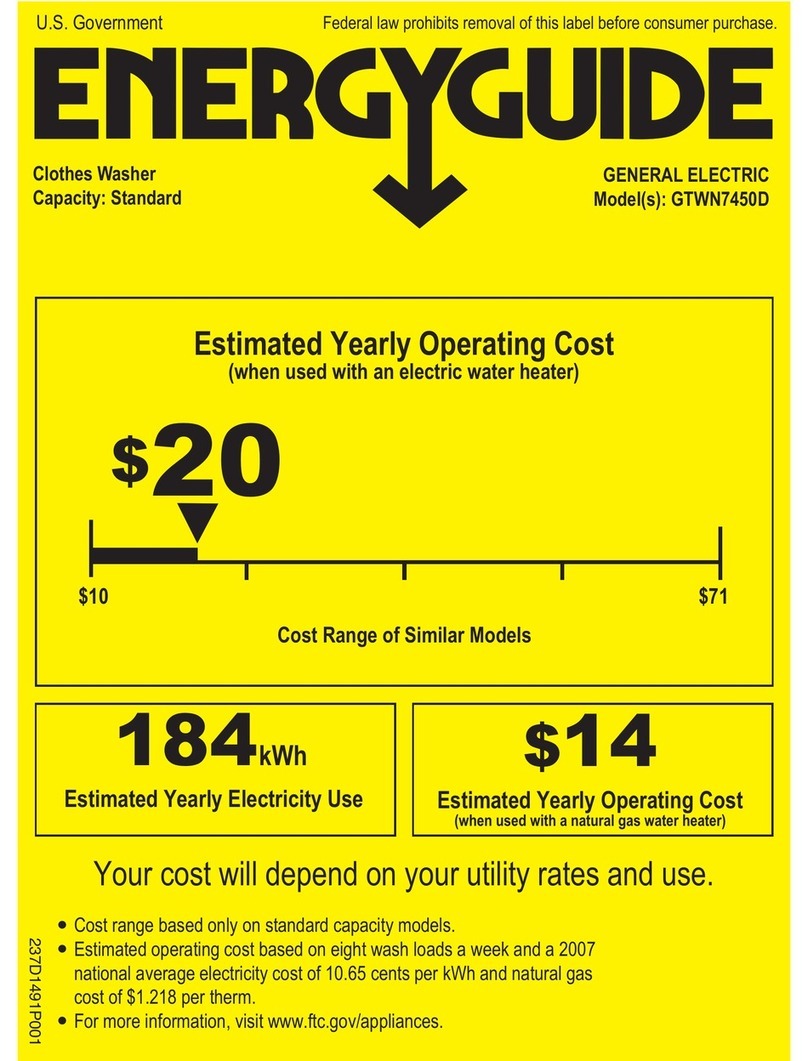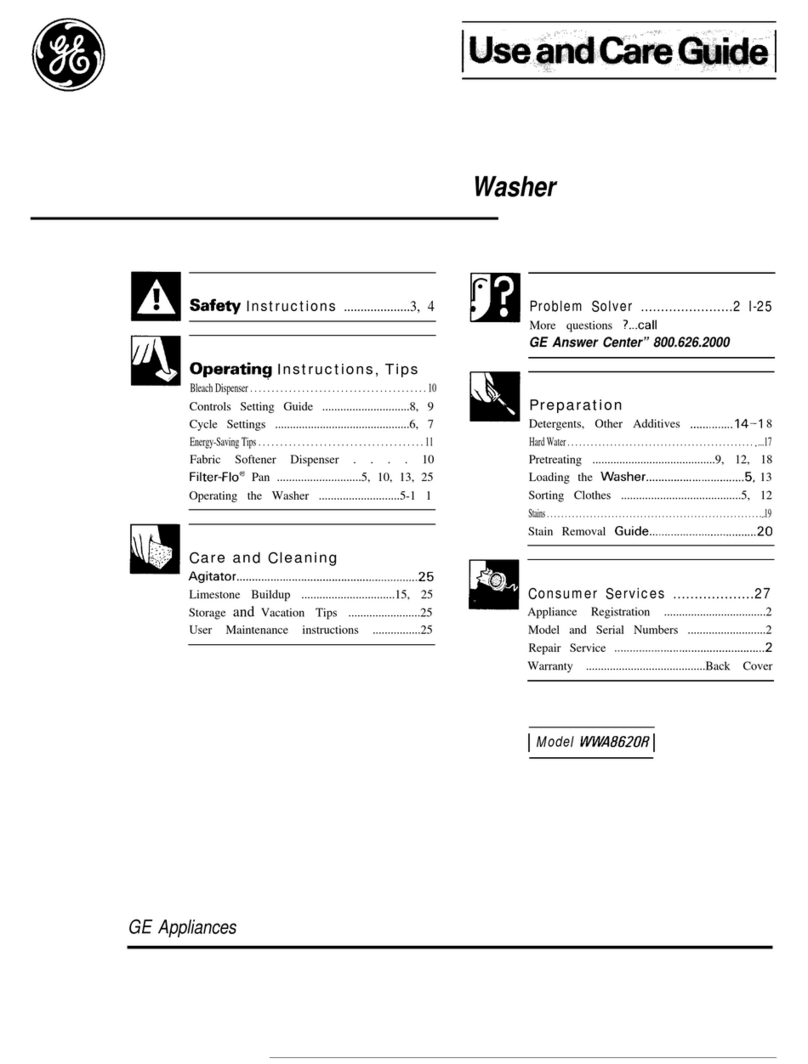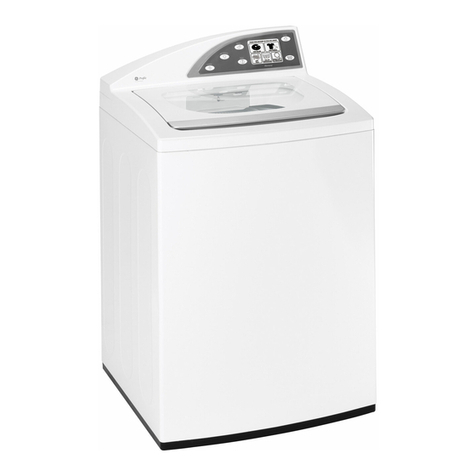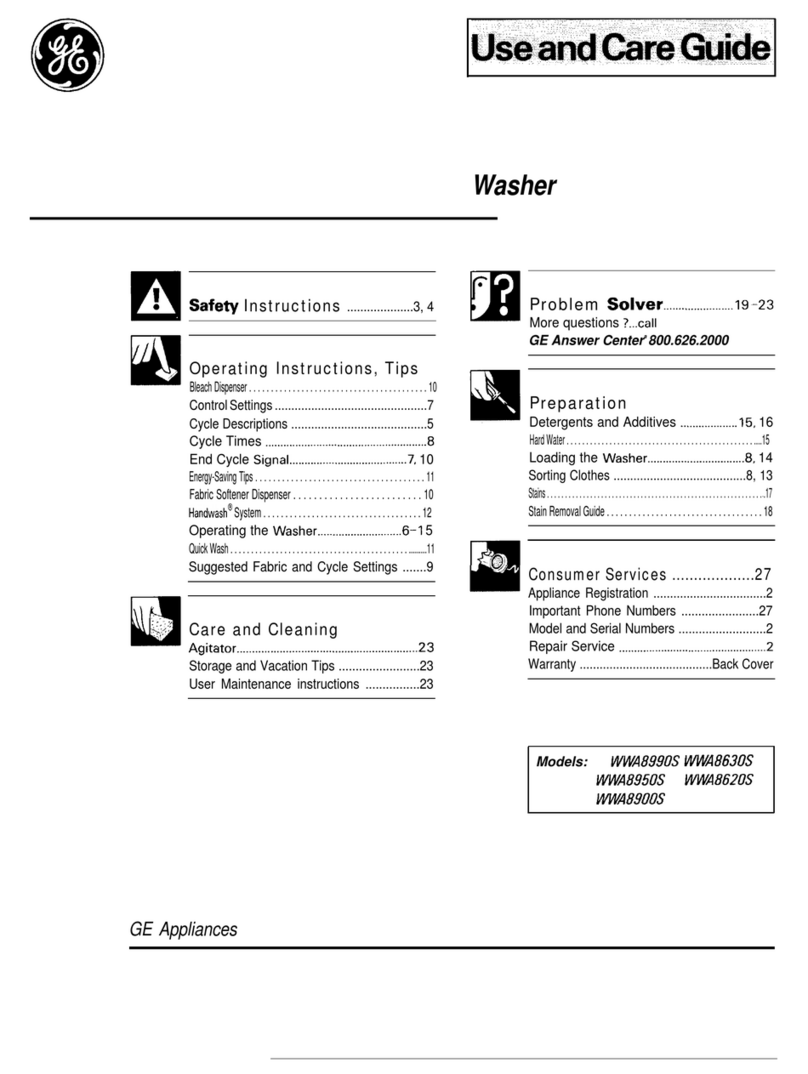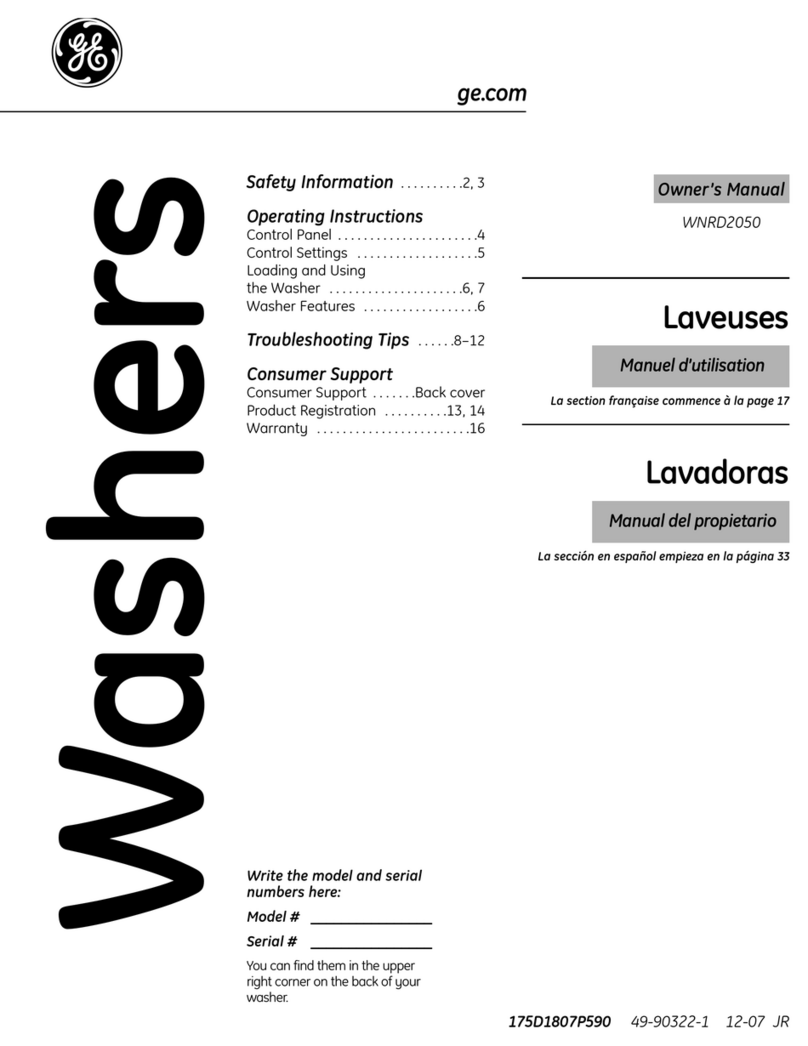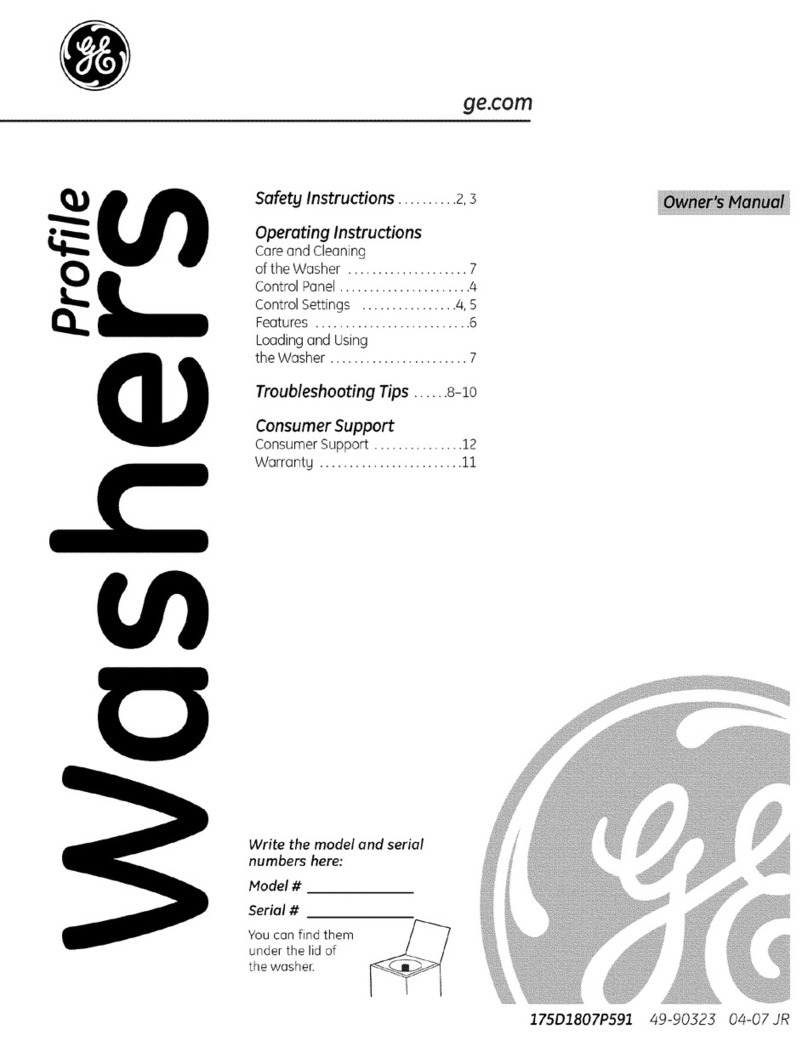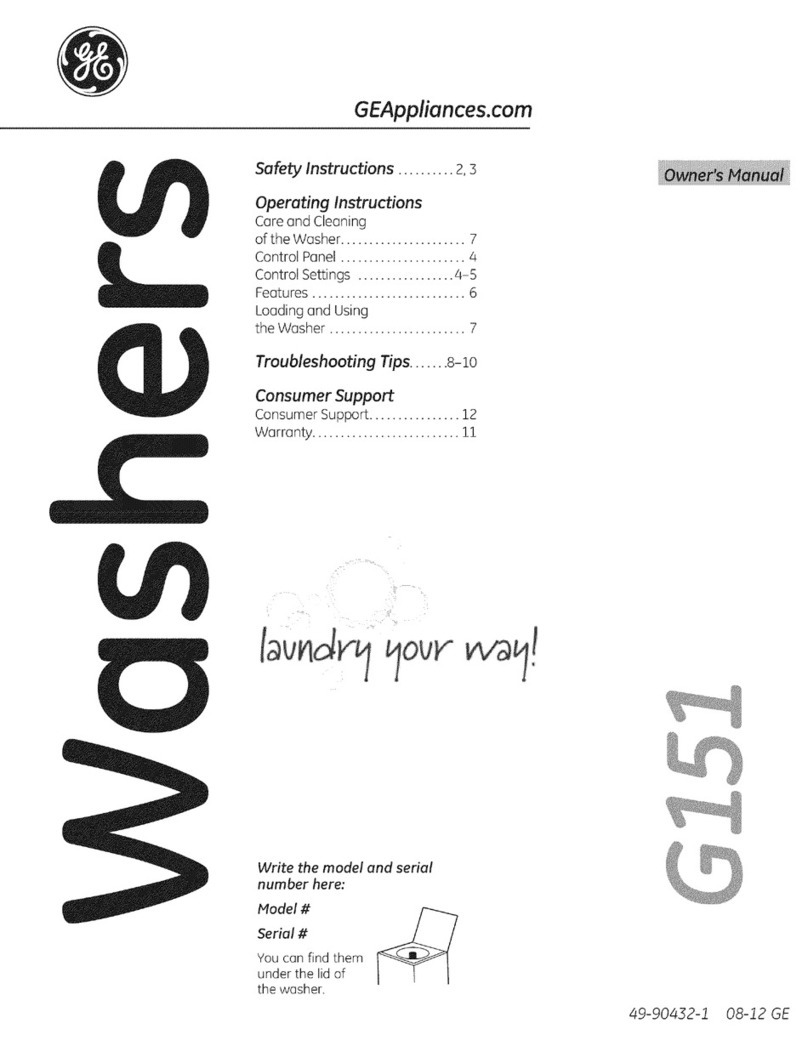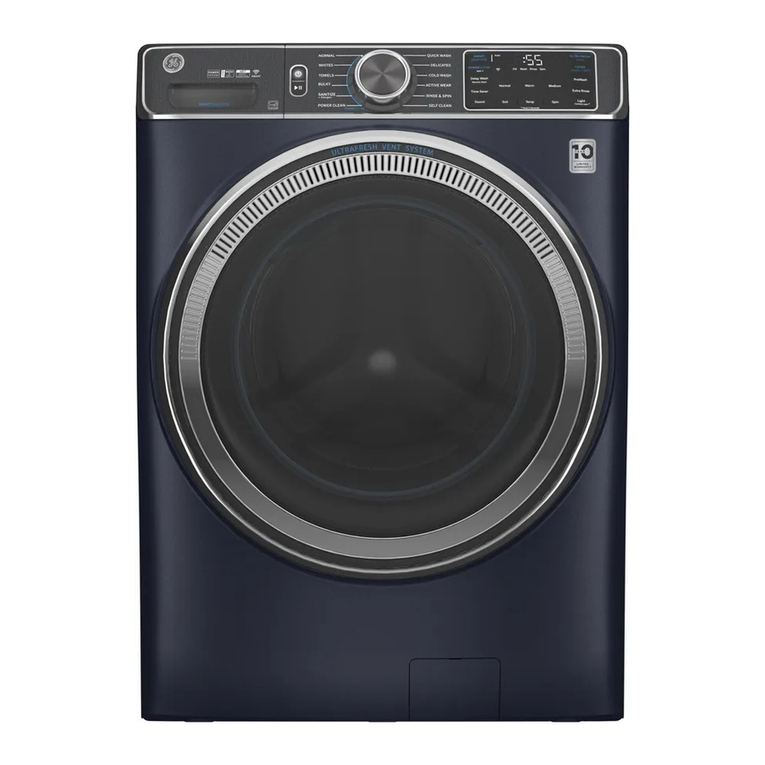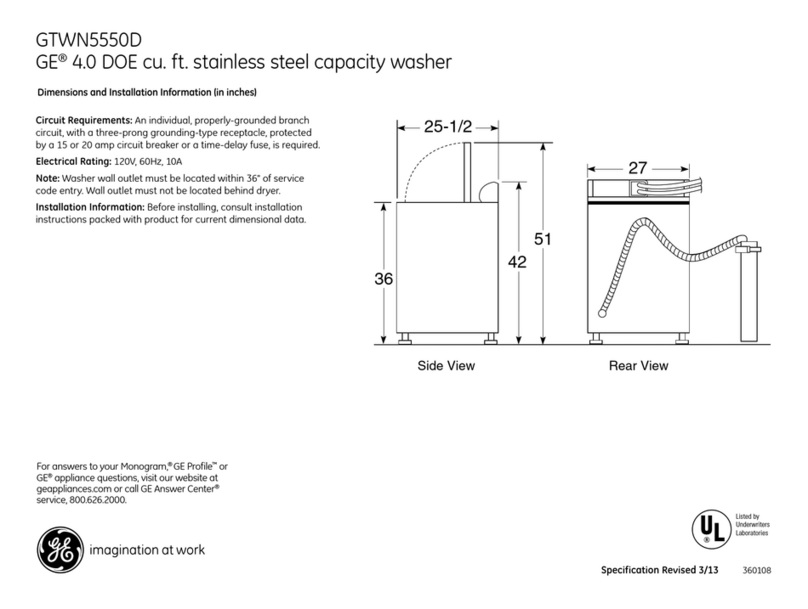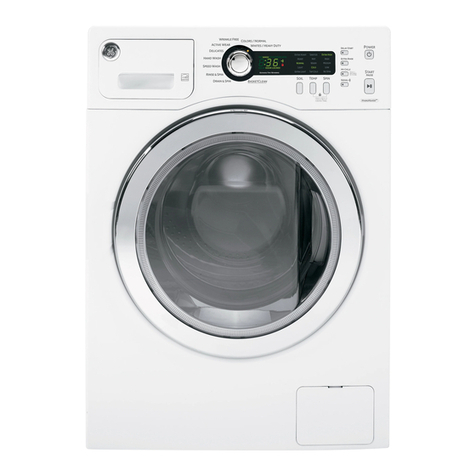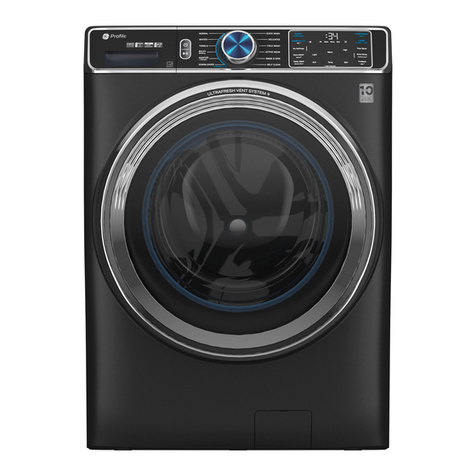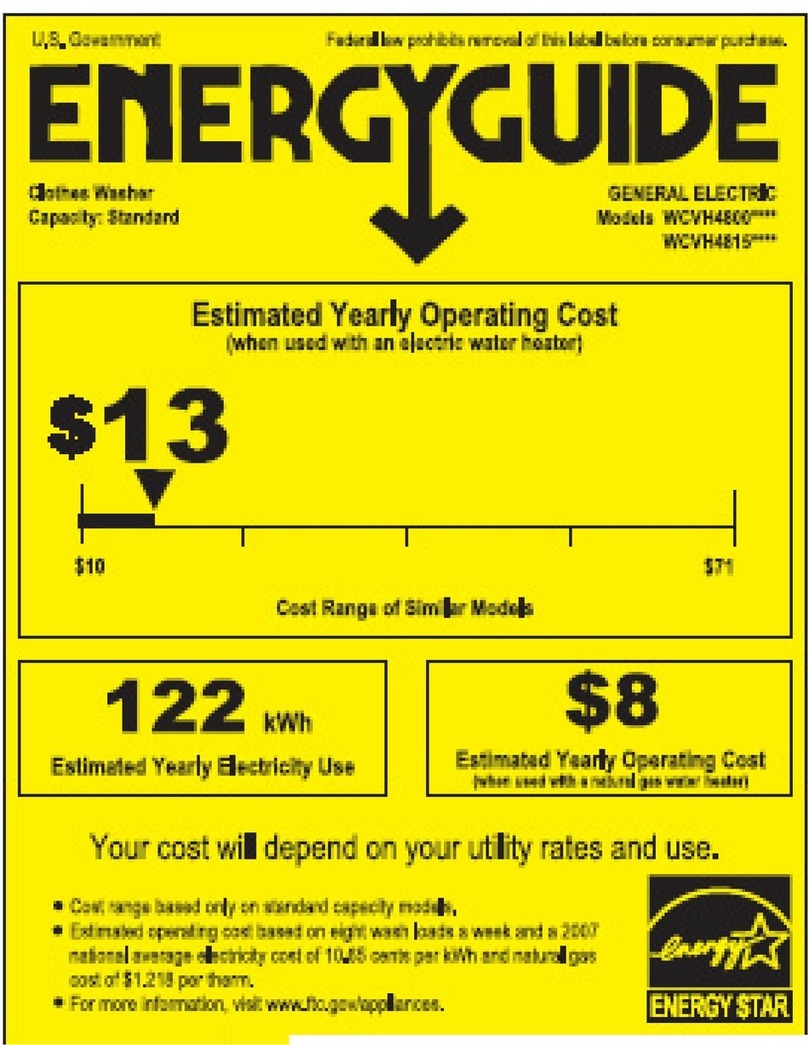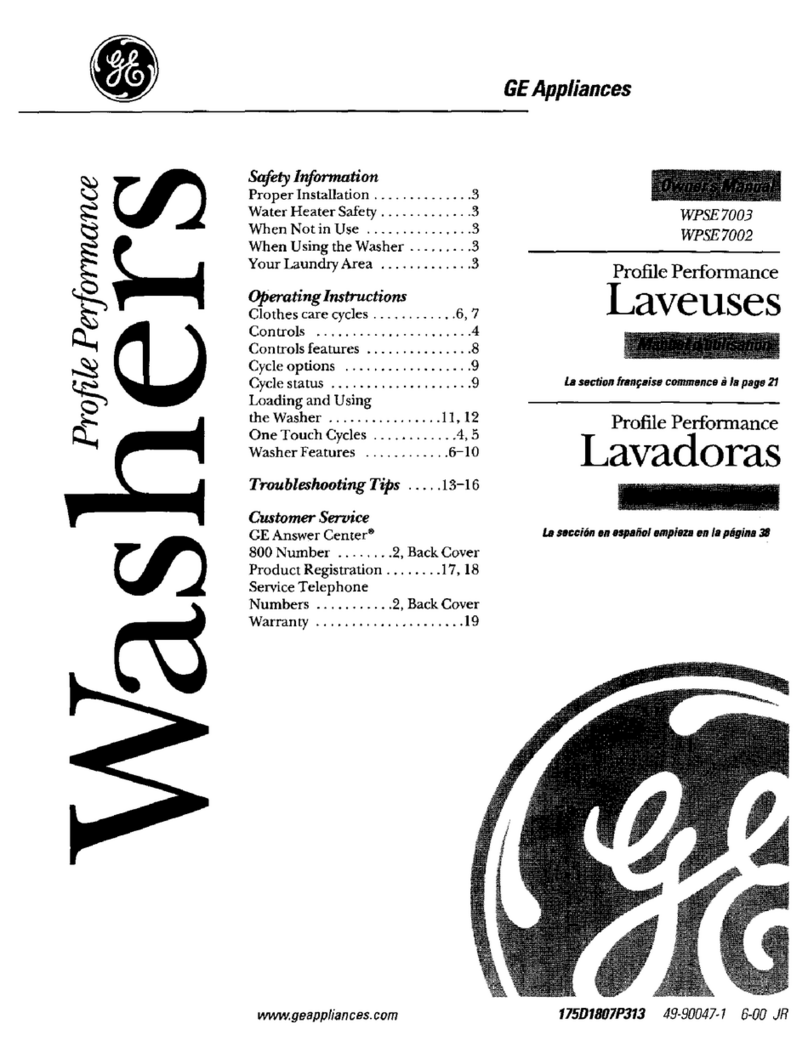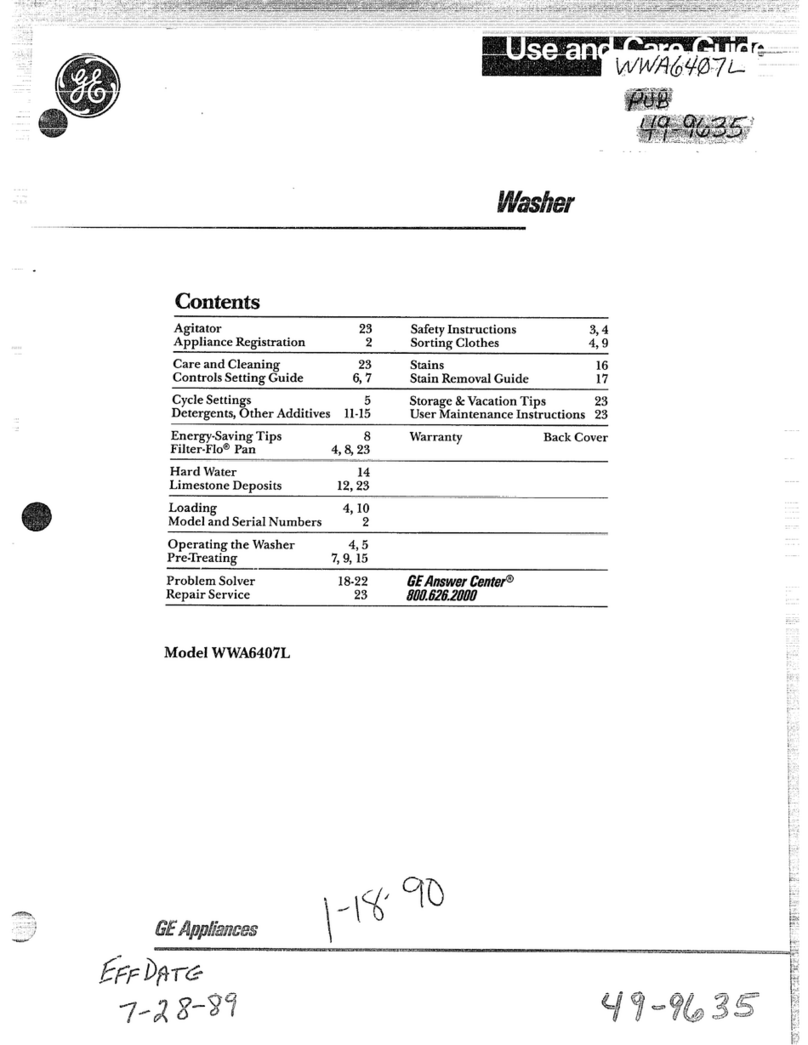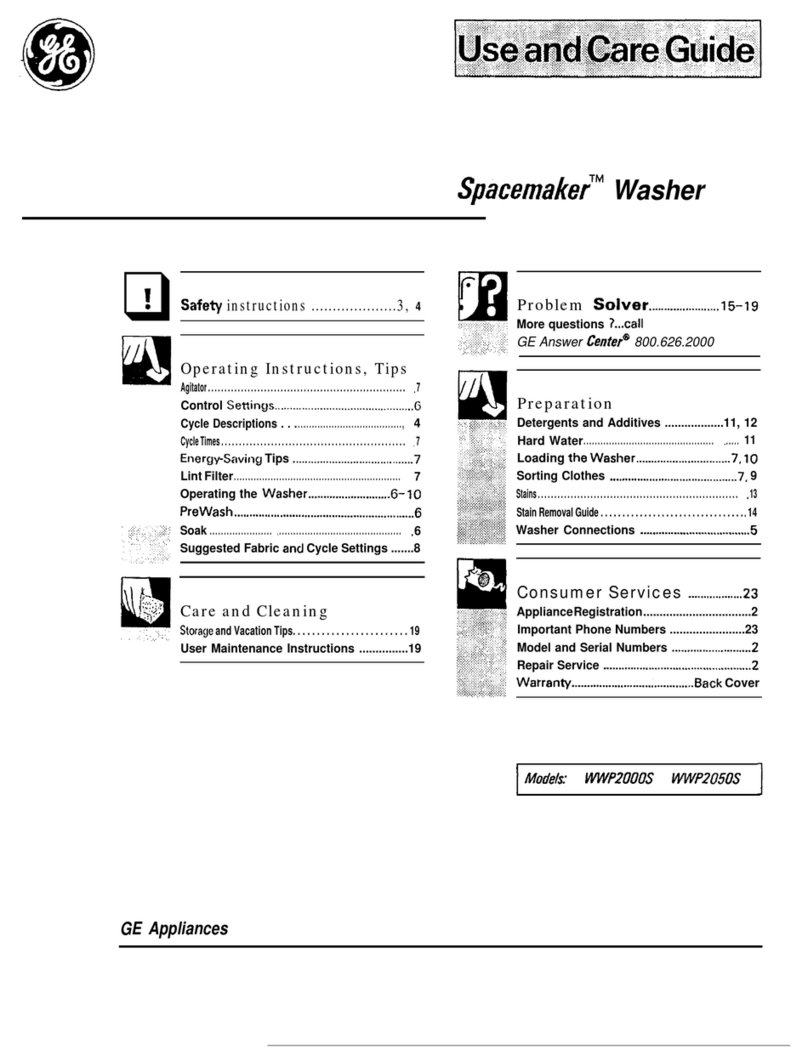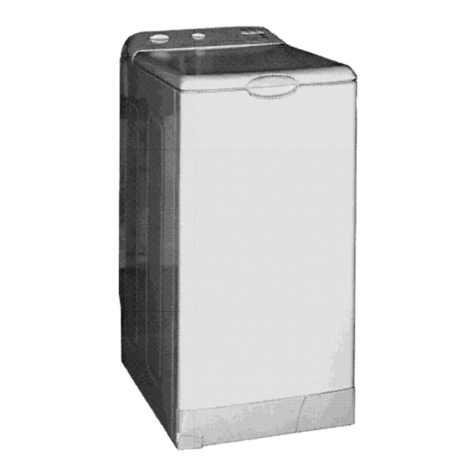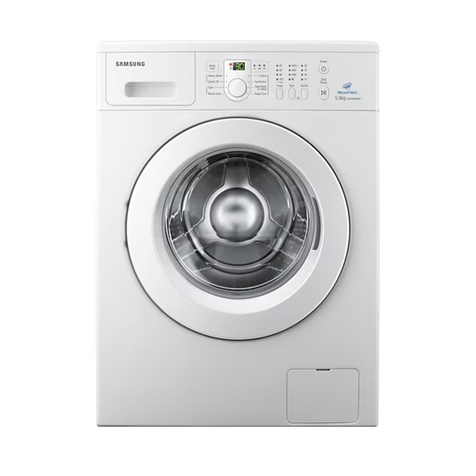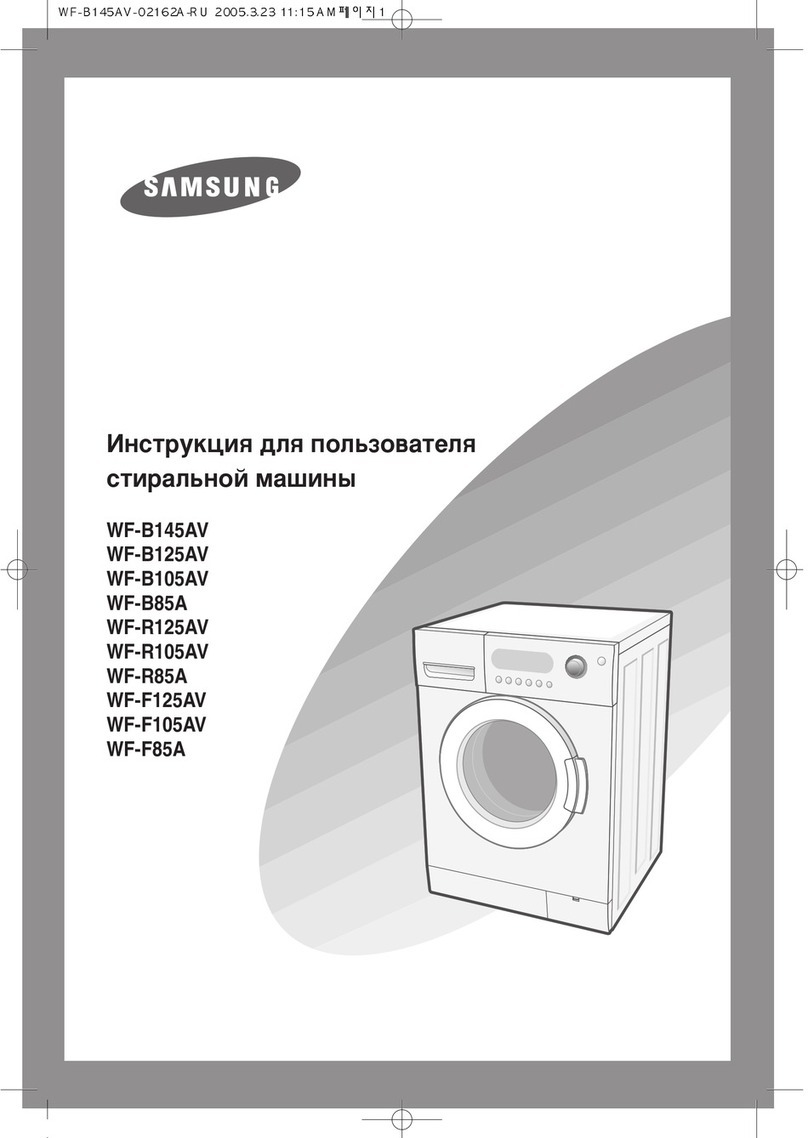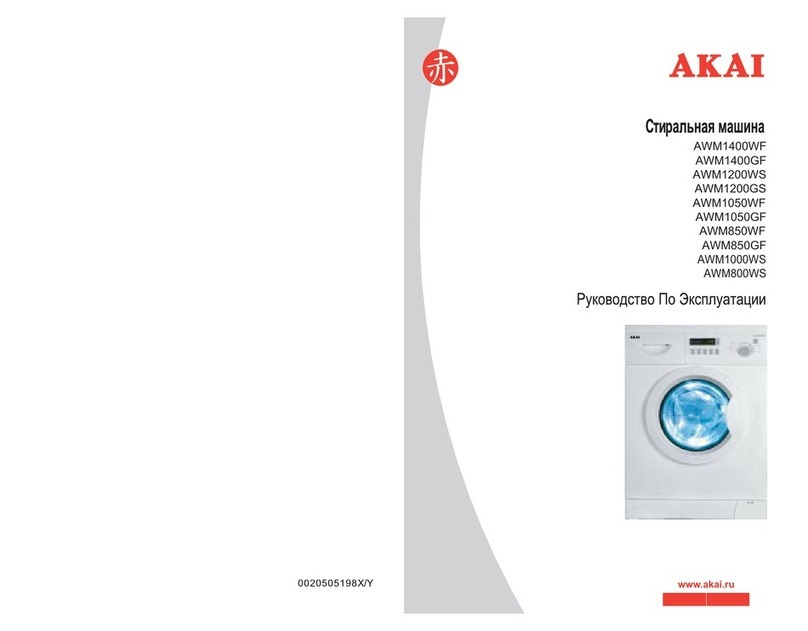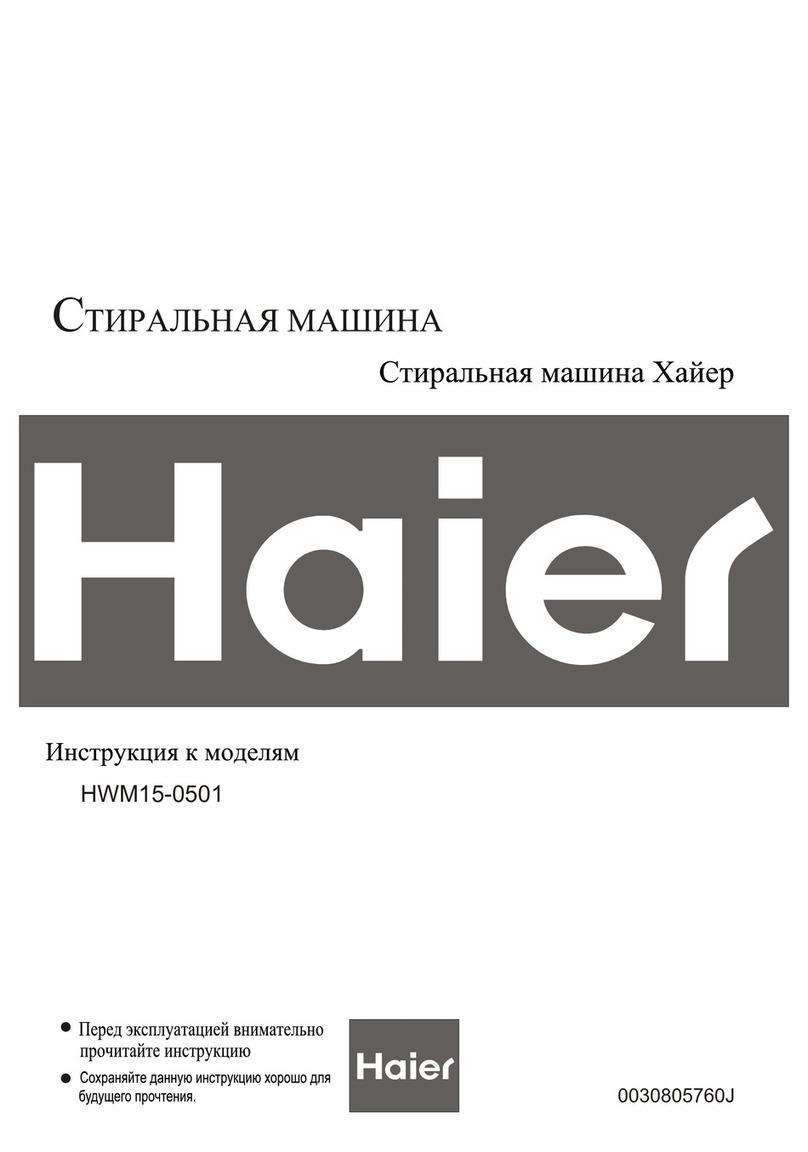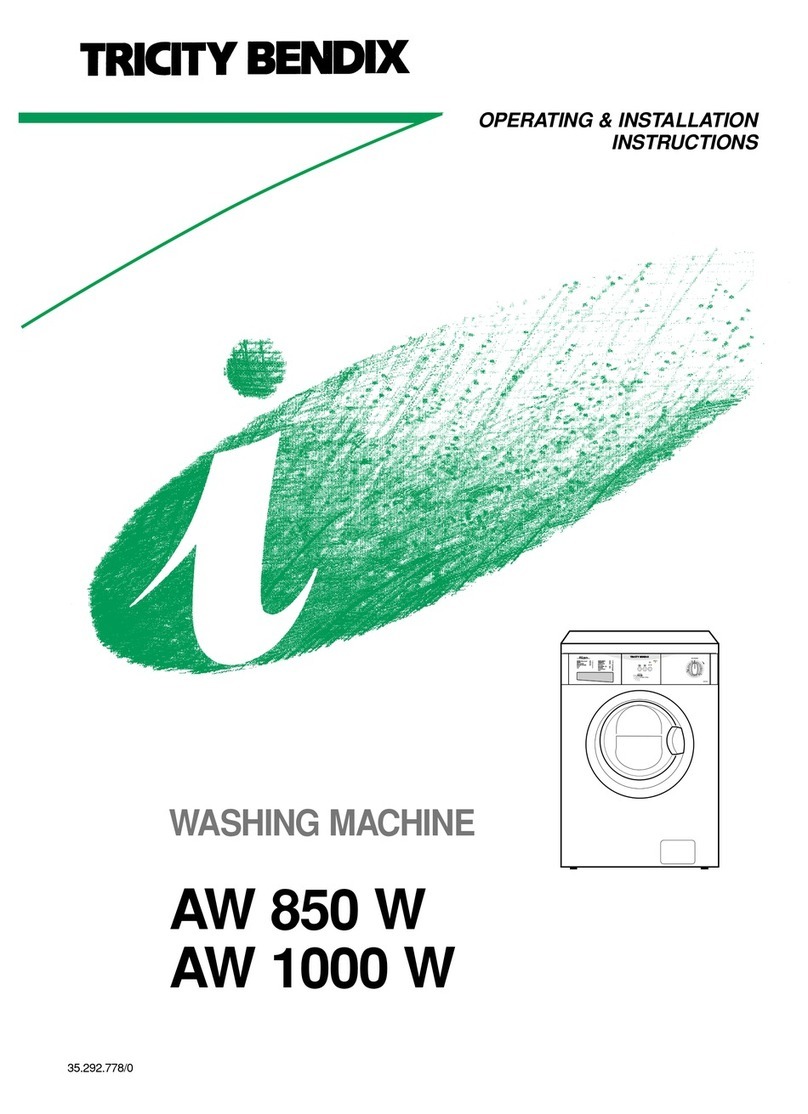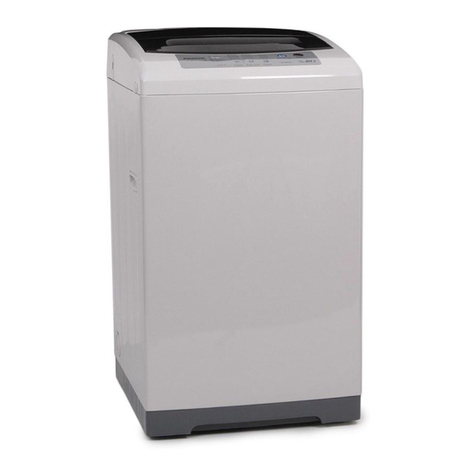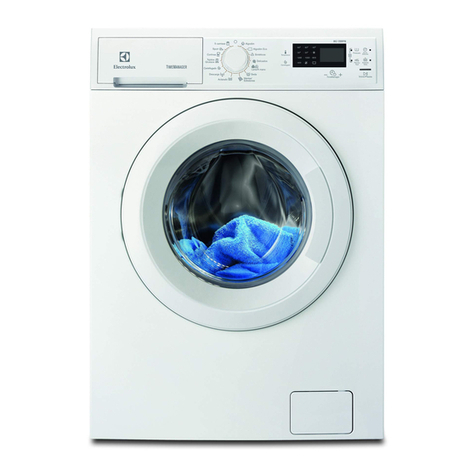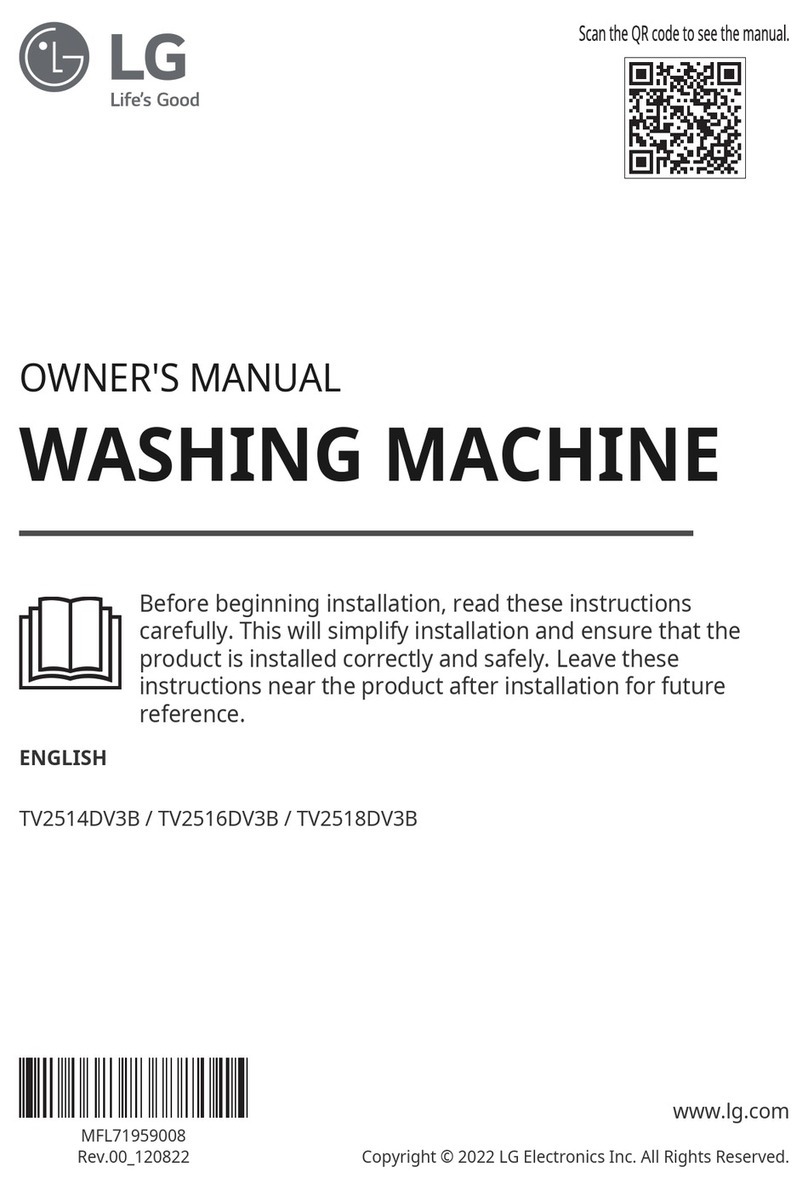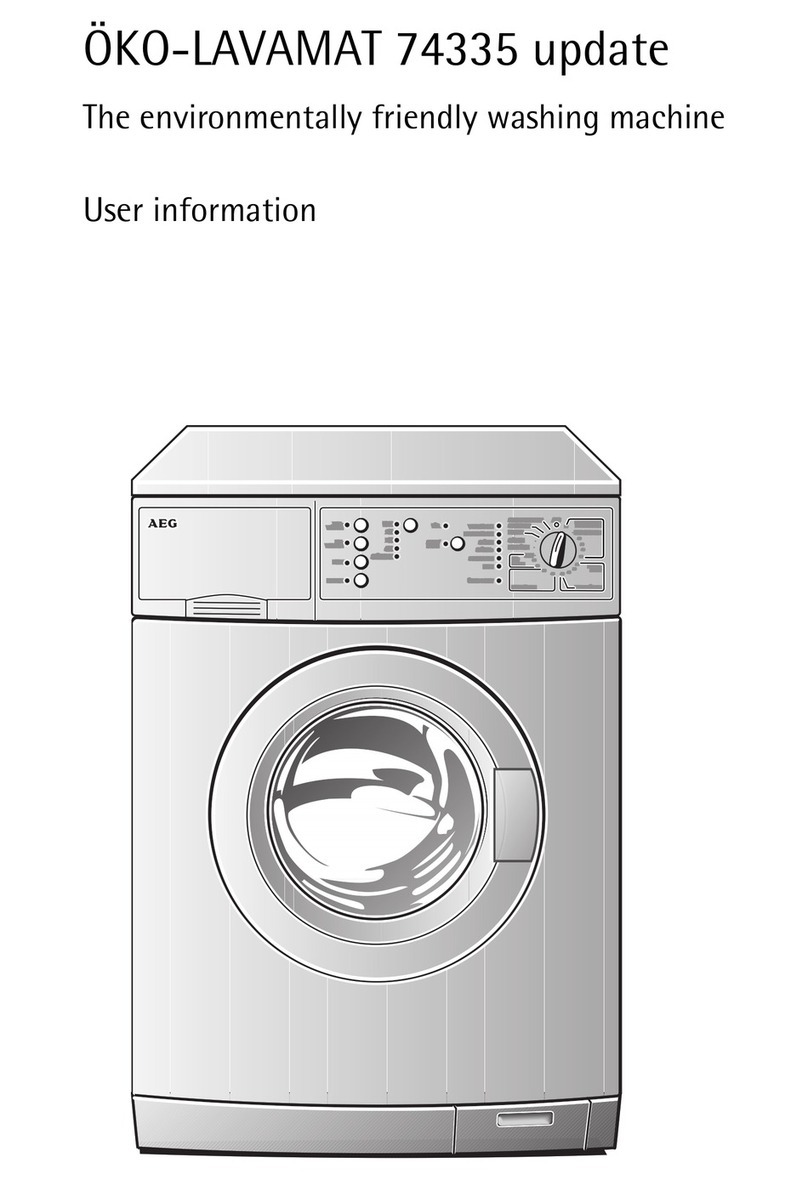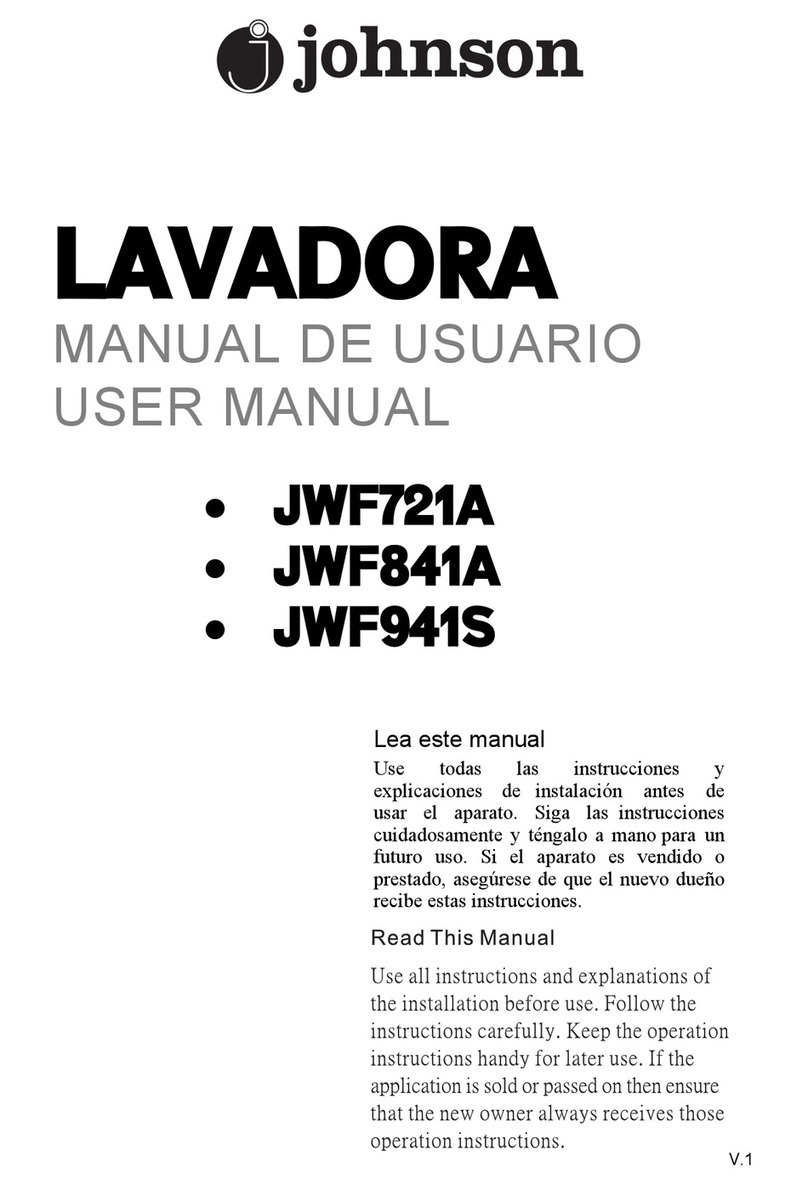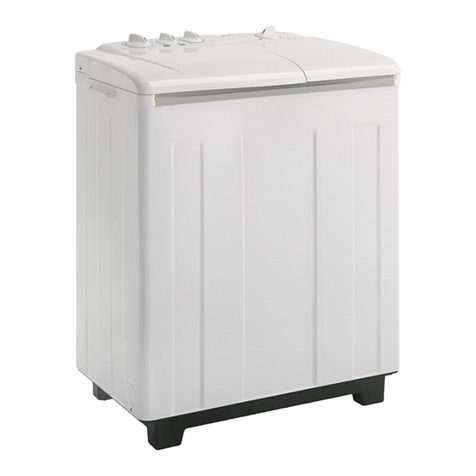
Installation Instructions
Review this list after installing the washer to avoid a charge for
a service call not covered by the warranty.
AFTER INSTALLATION CHECK THE FOLLOWING:
■
must be pulled tight and secured to drain facility
to prevent lifting out of drain facility during discharge.
Nozzle clamp must be securely tightened to prevent
leaks. MAKE SURE DRAIN HOSE IS NOT RUBBING AGAINST
CONCRETE OR BLOCK WALL. RUBBING MAY WEAR HOLES
■
–Rubber washers in both ends of fill hoses.
■
–Hot side (left valve) connected to hot
water supply, cold side (right valve) to cold water supply.
All connections should be hand tightened plus 1/2 turn
■
–Must be properly grounded to conform to local
■
–Adjust front leveling legs as necessary (preleveled
from the factory at 1"). Check side to side and front to back.
Tilt forward approximately 4" to adjust rear self-leveling
■
–Turn on faucets and run washer completely
through cycle by hand. Check for leaks, noise, vibration,
correct water temperatures and proper operation in wash
and spin. While washer is in spin, raise lid and check lid
switch and brake operation.
• Be sure to leave complete literature package and installation
instructions with consumer.
TYPICAL HOSE INSTALLATIONS:
For your safety, the information in these instructions
must be followed to minimize the risk of fire or explosion,
electric shock, or to prevent property damage, personal
• Under certain conditions hydrogen gas may be produced in a water
heater than has not been used for two weeks or more. Hydrogen
gas can be explosive under these circumstances.
• If the hot water has not been used for two weeks or more, prevent
the possibility of damage or injury by turning on all hot water
faucets and allowing them to run for several minutes. Do this before
using any electrical appliance which is connected to the hot water
system. This simple procedure will allow any built-in hydrogen gas
to escape. Since the gas is fl ammable, do not smoke or use an open
fl ame or appliance during this process.
• Keep the area underneath and around your appliances
free of combustible materials such as lint, paper, rags, chemicals,
• Close supervision is necessary if this appliance is used
by or near children. Do not allow children to play on, with,
• Never reach into washer while it is moving. Wait until the machine
has completely stopped before opening the lid.
• Do not mix chlorine bleach with ammonia or acids such as vinegar
and/or rust remover. Mixing different chemicals can produce a toxic
• Do not mix chlorine bleach with ammonia or acids such as vinegar
and/or rust remover. Mixing different chemicals can produce a toxic
• Do not mix chlorine bleach with ammonia or acids such as vinegar
gas which may cause death.
• Do not wash or dry articles that have been cleaned in, washed in,
soaked in, or spotted with combustible or explosive substances
(such as wax, oil, paint, gasoline, degreasers, dry-cleaning solvents,
kerosene, etc.). These substances give off vapors that may ignite
or explode. Do not add these substances to the wash water. Do not
use or place these substances around your washer or dryer during
• The laundry process can reduce the fl ame retardancy of fabrics. To
avoid such a result, carefully follow the garment manufacturer’s
wash and care instructions.
• To minimize the possibility of electric shock, unplug this appliance
from the power supply or disconnect the washer at the household
distribution panel by removing the fuse or switching off the circuit
breaker before attempting any maintenance or cleaning.
Turning the Cycle Selector knob to an off position does NOT
disconnect the appliance from the power supply.
• Never attempt to operate this appliance if it is damaged,
malfunctioning, partially disassembled, or has missing or broken
parts, including a damaged cord or plug.
• Turn off water faucets to relieve pressure on hoses and valves and
to minimize leakage if a break or rupture should occur. Check the
condition of the fi ll hoses; they should be replaced every 5 years.
• Before discharging a washer, or removing it from service, remove
the washer lid to prevent children from hiding inside.
• Do not attempt to repair or replace any part of this appliance unless
specifi cally recommended in these instructions or in published user-
repair instructions that you understand and have the skills to carry
• Do not tamper with controls.
READ AND FOLLOW THIS SAFETY
